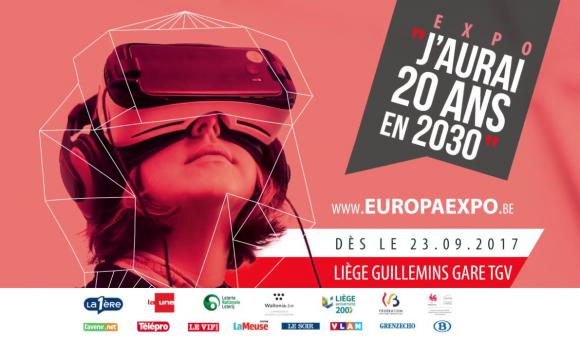
Friday 22 September saw the opening of the major exhibition "I will be 20 in 2030". It was inaugurated in two phases, first with an international press conference for over 50 journalists, and then with a visit to the exhibition for more than 250 invited guests. It is already safe to say that this is a pure gem, which will be added to the prestigious list of the now 12 exhibitions planned by Europa 50 and Collections & Patrimoines.
For its bicentenary, the University of Liège has given itself the challenge of trying to imagine what life will be like in 2030, i.e. 13 years from now. Its aim is to highlight the universality of science and research to predict the major scientific advances of the future.
"One of the main difficulties was in not going too far down the road of sensationalism or science fiction, because we all know that it is almost impossible to predict how we will live in the future", Bernard Rentier, President of the Bicentenary Committee and former rector of the university, told RTBF. "We just have to remember how we lived 13 years ago. So it's a challenge."
Robots, futurist rooms, a giant 3D heart and a space shuttle are just some of the items in this unique and ambitious exhibition.
To create this project, ULiège worked with the non-profit association Europa 50, which is anything but a beginner, having produced the “SOS PLANET”, “GOLDEN SIXTIES - J’AVAIS 20 ANS EN 60”, “LIEGE EXPO 14-18 - J’AVAIS 20 ANS EN 14” and “De SALVADOR à DALI”, exhibitions which together attracted more than one million visitors to Liège-Guillemins station, designed by Calatrava. It is in the same international station that the exhibition will be held from 23 September 2017 to 8 June 2018.